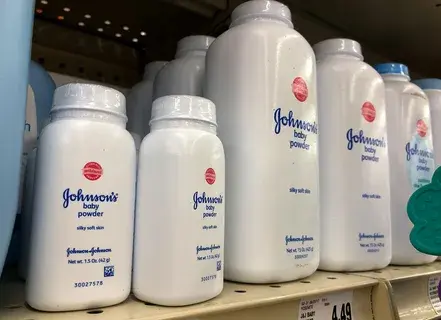Johnson & Johnson's baby powder causes cancer
- Наргис Косимова
- Jun 6, 2024
- 3 min read
Updated: Jun 16, 2024
There was a message on social networks that "Johnson & Johnson" baby powder causes cancer. According to the Roskachestvo portal, Johnson & Johnson has announced that it will stop producing talc-based baby powder from 2023. It was caused by a decade-long trial of causing ovarian cancer. Johnson & Johnson lost a lawsuit over the use of talc in its products. Now the company has to pay 110 million dollars to an American woman who used talcum powder after showering. This could trigger a new wave of lawsuits against the company.

According to statistics, 40% of women living in developed countries have the habit of using powder for hygienic purposes. Now the company has to pay 110 million dollars to an American woman who used talcum powder after showering. This could trigger a new wave of lawsuits against the company. According to statistics, 40% of women living in developed countries have the habit of using powder for hygienic purposes. The reason for this was a decade-long trial for causing ovarian cancer. The company now wants to replace the talc in the powder with corn starch.

Talc itself is not dangerous, but the raw material from which talc is often produced contains carcinogenic asbestos. Talcum powder is obtained by grinding a natural mineral consisting mainly of magnesium and silicates. Both talc and asbestos are found in the same places and in the same deposits
The first information about the dangers of talc (more precisely, asbestos in it) appeared in the 1970s. In 1976, the US Food and Drug Administration (FDA) banned asbestos in cosmetics.
The American Cancer Society conducted a study in women and found a link between cosmetic talc and the risk of ovarian cancer. When a product containing talc is applied to the genital area, the powder particles enter the penis, then fallopian tubes and ovaries.
The first study devoted to this problem was conducted in 1971. Then scientists discovered that talc particles can cause swelling in a woman's ovaries and uterus. A 1982 study found a link between talcum powder and ovarian cancer. Since then, dozens of studies have confirmed this connection.
Reports from independent laboratories testing J&J powders from 1972 to 1975 showed high concentrations of asbestos, but the company hid the results from regulators.
Complaints about cancer associated with the use of branded products began in the late 20th century. The first claim came from an American massage therapist who regularly used talc on both herself and her children. However, the case was closed due to lack of sufficient evidens.
Interestingly, despite the fact that talc is sold as a children's product, it is also actively used by adults.

In 2006, WHO reported that talc used in cosmetics may be carcinogenic.It can cause ovarian cancer when used as a hygiene product.https://dzen.ru/a/ZL5sPjV5ixphpqmG
Talc supplier Luzenac America Inc. After informing J&J and other customers about the dangers of the powder, information about the carcinogenicity of talc began to spread among consumers. After that, sales of the powder decreased slightly, but even then, instead of changing the composition of the powder, the company began to promote sales in every way. Advertising campaigns were conducted in the USA and Latin America.
In 2013 According to him, if women use talcum powder, the risk of disease increases by 20-30%. However, some studies deny this connection, so the harm of talc in the powder has not been clearly proven, according to the experts of the Czech consumer organization DTest.
However, according to Reuters the company has now completely abandoned the production of talc-based powder and has announced that starting in 2023, the powder will be made with corn starch as the main component.
The safety of cornstarch as an alternative to talc was reported in 2000 by the American Journal of Obstetrics and Gynecology. In addition, starch has a slightly different structure and is not so dangerous when inhaled. The composition of the new baby powder has been improved and no longer contains dangerous compounds in talc, according to the Spanish consumer organization OCU.
J&J said the remaining lawsuits are related to a rare cancer called mesothelioma and will be handled outside of the plan.
The settlement, which is pending approval by the plaintiffs, would allow J&J to settle the claims by filing a third bankruptcy for its LTL Management subsidiary. Courts have rejected two previous attempts by J&J to settle the lawsuits by declaring bankruptcy of a subsidiary created to pay the company's talc-making liabilities.
J&J filed for a bankruptcy settlement that would end the litigation altogether and prevent future lawsuits.
In July 2023, a jury ordered Johnson & Johnson to pay $18.8 million to Emory Hernandez Valadez, a Californian who claimed to have developed cancer from using the company's products
J&J https://www.jnj.com/ is a holding company with more than 250 subsidiaries worldwide. It also includes the production of pharmaceuticals, hygiene products and medical devices.
Factchecker.uz verdict: true


